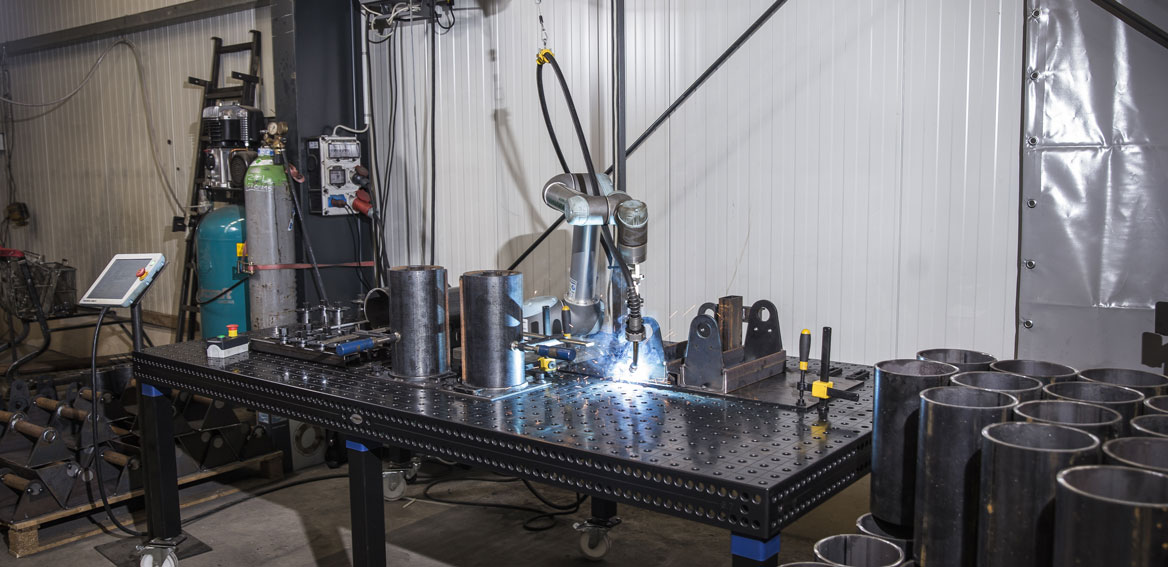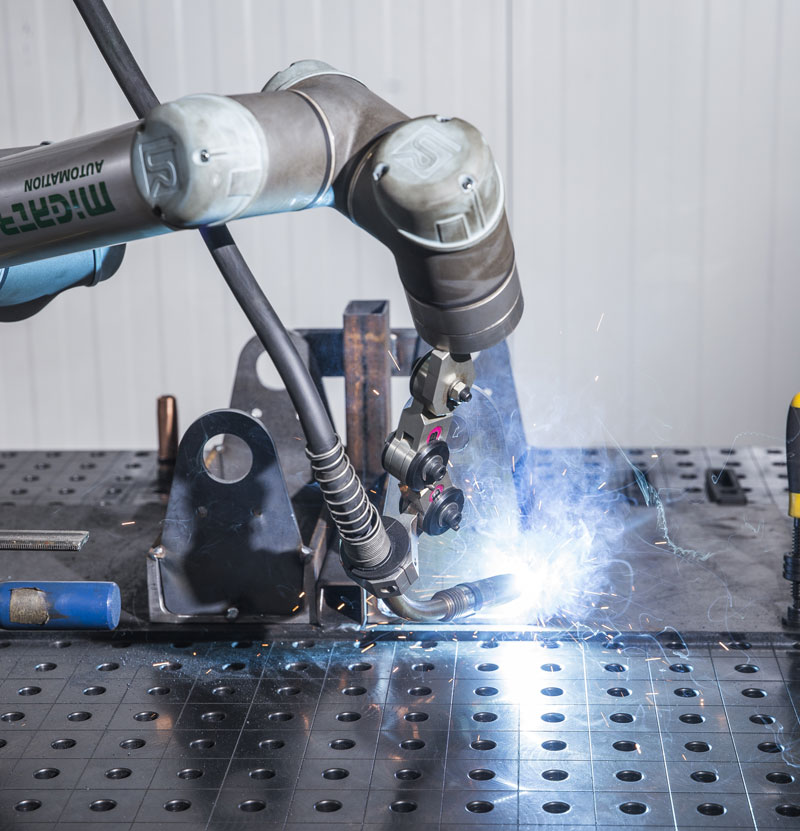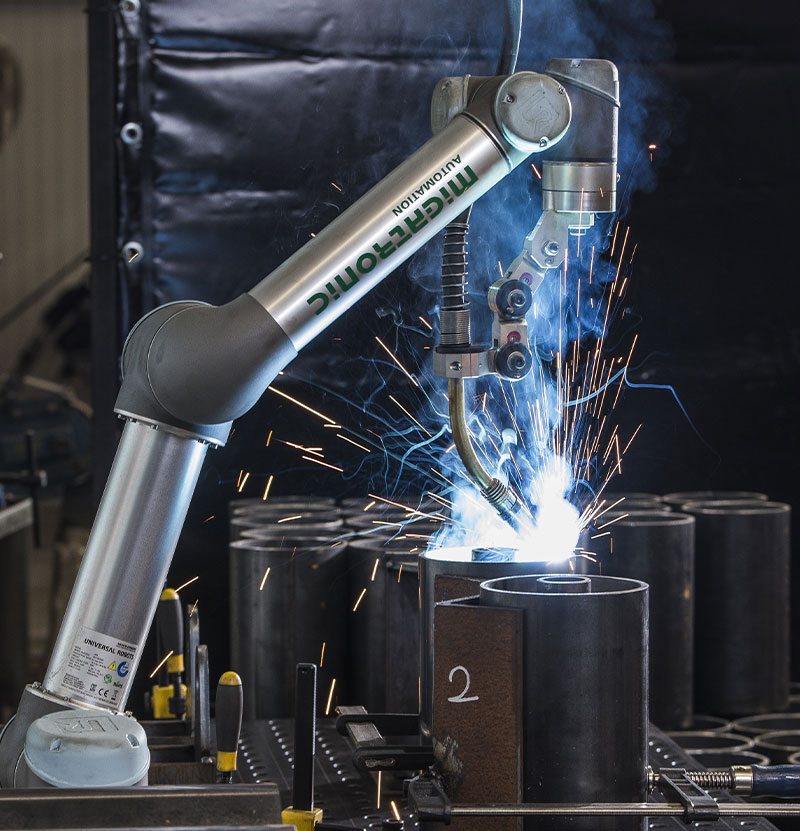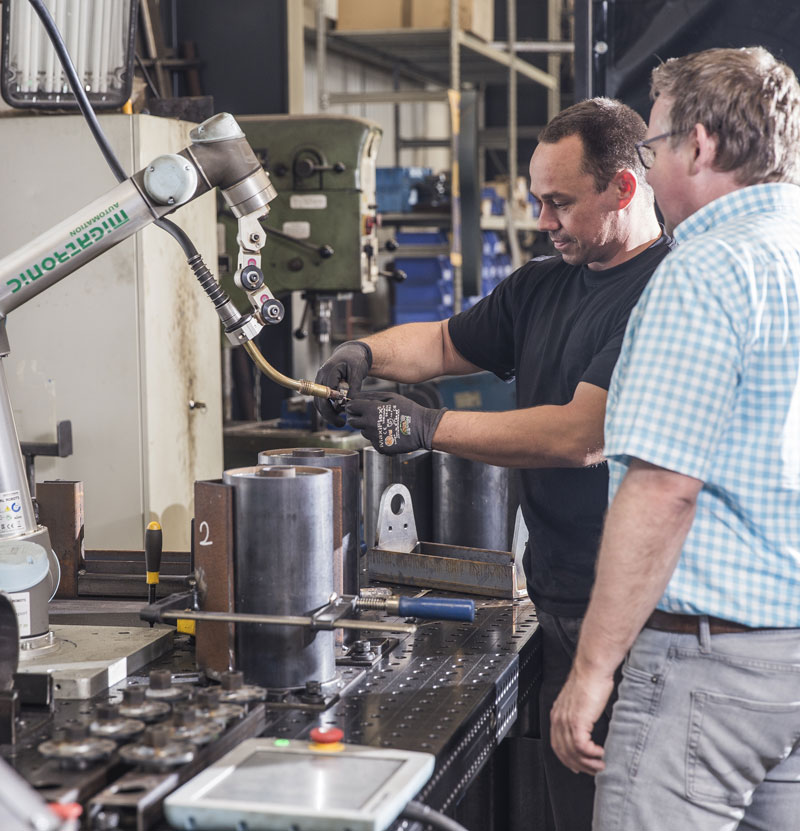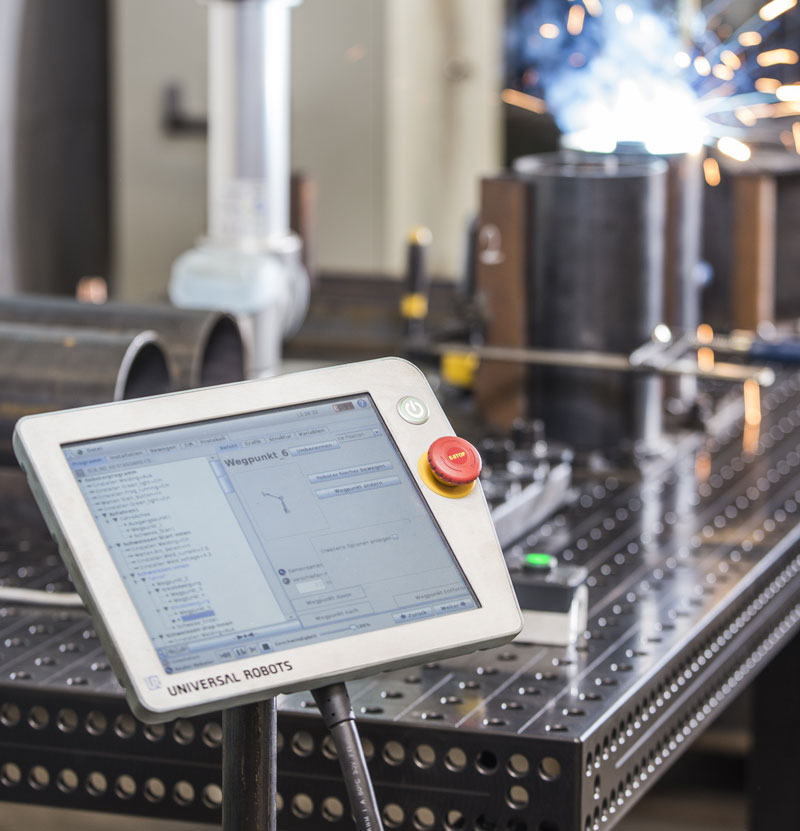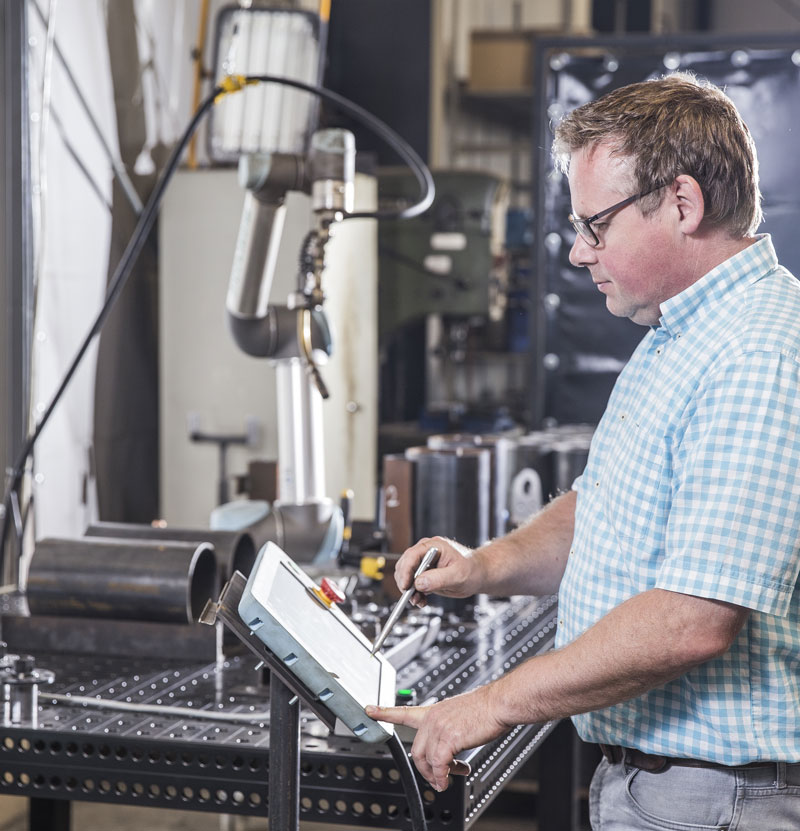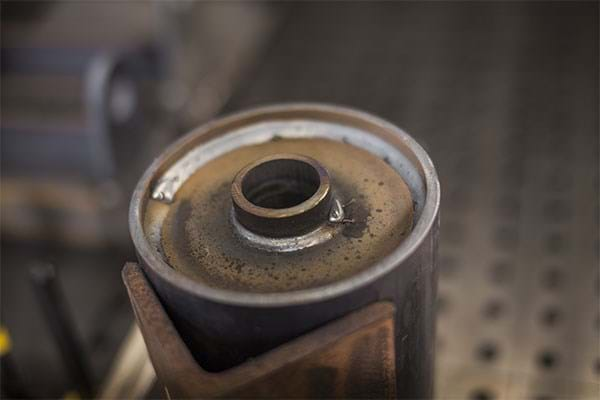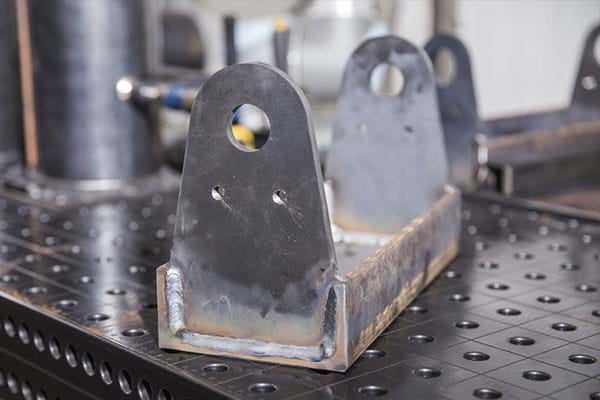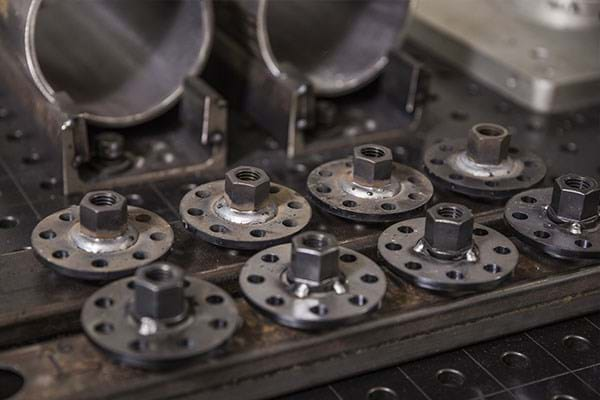Component #1 - Steel containers
L&S produce steel containers in different sizes (length, inside and outside diameters) and in batches of several hundred. On each side of the component, the axle bushings are welded with two circular fillet welds. Semiautomatic production with CoWelder has clearly improved both production speed and welding quality.
